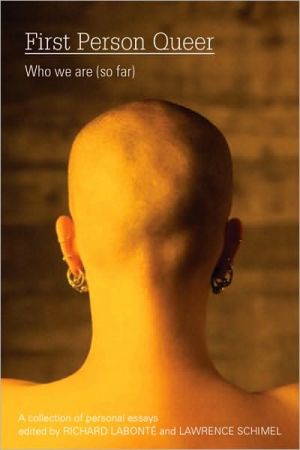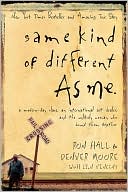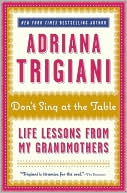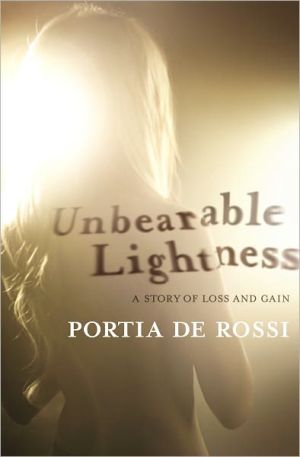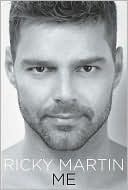First Person Queer: Who We Are (So Far)
In this amazing, wide-ranging anthology of nonfiction essays, contributors write intimate and honest first-person accounts of queer experience, from coming out to “passing” as straight to growing old to living proud. These are the stories of contemporary gay and lesbian life—and by definition, are funny, sad, hopeful, and truthful. Representing a diversity of genders, ages, races, and orientations, and edited by two acclaimed writers and anthologists (who between them have written or edited...
Search in google:
An anthology of first-person essays depicting the diversity, complexity, and experience of contemporary GLBTQ life. Kirkus Reviews Personal nonfiction accounts from every stripe in the rainbow and then some. In their second anthology, Labonte and Schimel (The Future is Queer, 2006) have assembled a plethora of Canadian and American authors who share the "satisfaction of a realized sexual self," a penchant for the pronoun "I" (though not all contributors prefer it in its upper case state) and little else. The collection winningly celebrates differences rooted in a variety of ways to the mutable boundaries of sexuality and gender. Nalo Hopkinson, who identifies herself as a "queer, poly woman," begins by discussing her difficulties in filling out a questionnaire on women's sexual fantasies; she found no boxes into which she "could have wedged my experience." Gregory Woods worries that his "queer membership" has lapsed because a transurethral prostate resection at age 50 has rendered him impotent. "I am a suburban, middle-aged, neo-virgin, luxuriating in regret," he movingly laments. "How queer is that?" Transgendered author and performance artist Kate Bornstein offers a touching, funny piece detailing the delicacy involved in describing to the "blue-haired" ladies at her mother's funeral her relation to the deceased. Her identity was less of an issue for Mom, Bornstein writes: "I told her that one of her two sons was about to become a dyke. She preferred the word lesbian. My son, the lesbian,' she would tell her close friends, with a deep sigh and a smile on her lips." Some selections are more successful than others, but individual snapshots matter less than the extraordinary queer panorama they collectively embody. Whether read in a couple of sittings or savored essay by essay, this is an eye-opening vista ondiversity.
Introduction: We're All in Here, Somewhere$dLabonte & Schimel 7The Straight Girl at the Party Stacey May Fowles 10Uncle Arthur Josh Kilmer-Purcell 15Genderquerulous Nalo Hopkinson 20A Never-Gardening Gay Old Man Sky Gilbert 28Hoowahyoo? Kate Bornstein 32Cool/Queer/Cool R. Gay 36A wo'mn called sir Sharon Bridgforth 39Greys D. Travers Scott 46Why Point Out What We Already Know? Chong-suk Han 52Breath Achy Obejas 57The Modernist Chair: A Short History Robin Metcalfe 62Miss Scarlet, with Cat Poo, in the Castro Kirk Read 68Threats Arden Eli Hill 72Dual Identities Jane Van Ingen 77Birds in the Hand George K. Ilsley 81The Politics of Pride: A Personal Journey Katherine V. Forrest 86Survey Says David C. Findlay 91Theories about Bodies and Truth Sandra Lambert 100Marriage: Why ITook the Plunge Daniel Gawthrop 103Why I Don't Want to Marry (and Why I Don't Want You to Either) Joy Parks 108Shirts Versus Skins Christopher DiRaddo 113A Lollipop and a Dime Blaine Marchand 117Tribute to a Community of Artists: A Femme Diary Mary M. Davies 122Gay and Tired Andy Quan 127Not Getting Killed, With Kindness S. Bear Bergman 132Wild Nights Simon Sheppard 139Every Street Has Its Girl Bonnie J. Morris 145Homofauxbia Joshua Dalton 151Large and Back in Charge Shawn Syms 154Descend Jason Timermanis 158Deep Pockets Gayle Roberts 162The Sexual Luddite Jeffrey Rotin 166Words Therese Szymanski 171Altered People Gregory Woods 176Daughters of Zelophehad Karen Taylor 181Hecklers and Christians David Hatfield Sparks 186Conduct Unbecoming Stan Persky 191Unfriendly Mette Bach 200Queer Person First Tim Miller 203The Future of Francis Ivan E. Coyote 210About the Authors 213About the Editors 222Publication Credits 224
\ Kirkus ReviewsPersonal nonfiction accounts from every stripe in the rainbow and then some. In their second anthology, Labonte and Schimel (The Future is Queer, 2006) have assembled a plethora of Canadian and American authors who share the "satisfaction of a realized sexual self," a penchant for the pronoun "I" (though not all contributors prefer it in its upper case state) and little else. The collection winningly celebrates differences rooted in a variety of ways to the mutable boundaries of sexuality and gender. Nalo Hopkinson, who identifies herself as a "queer, poly woman," begins by discussing her difficulties in filling out a questionnaire on women's sexual fantasies; she found no boxes into which she "could have wedged my experience." Gregory Woods worries that his "queer membership" has lapsed because a transurethral prostate resection at age 50 has rendered him impotent. "I am a suburban, middle-aged, neo-virgin, luxuriating in regret," he movingly laments. "How queer is that?" Transgendered author and performance artist Kate Bornstein offers a touching, funny piece detailing the delicacy involved in describing to the "blue-haired" ladies at her mother's funeral her relation to the deceased. Her identity was less of an issue for Mom, Bornstein writes: "I told her that one of her two sons was about to become a dyke. She preferred the word lesbian. ‘My son, the lesbian,' she would tell her close friends, with a deep sigh and a smile on her lips." Some selections are more successful than others, but individual snapshots matter less than the extraordinary queer panorama they collectively embody. Whether read in a couple of sittings or savored essay by essay, this is an eye-opening vista ondiversity.\ \
